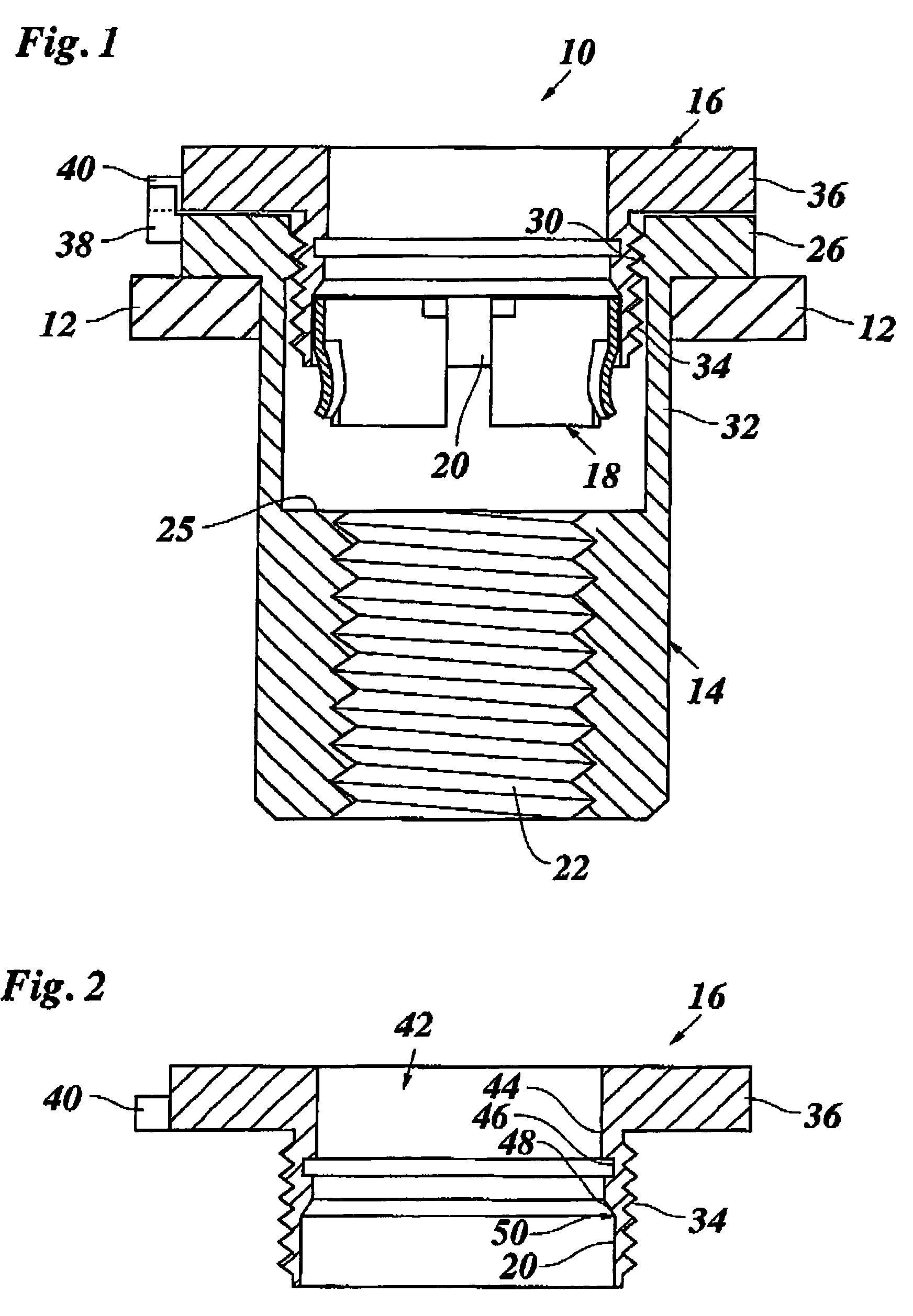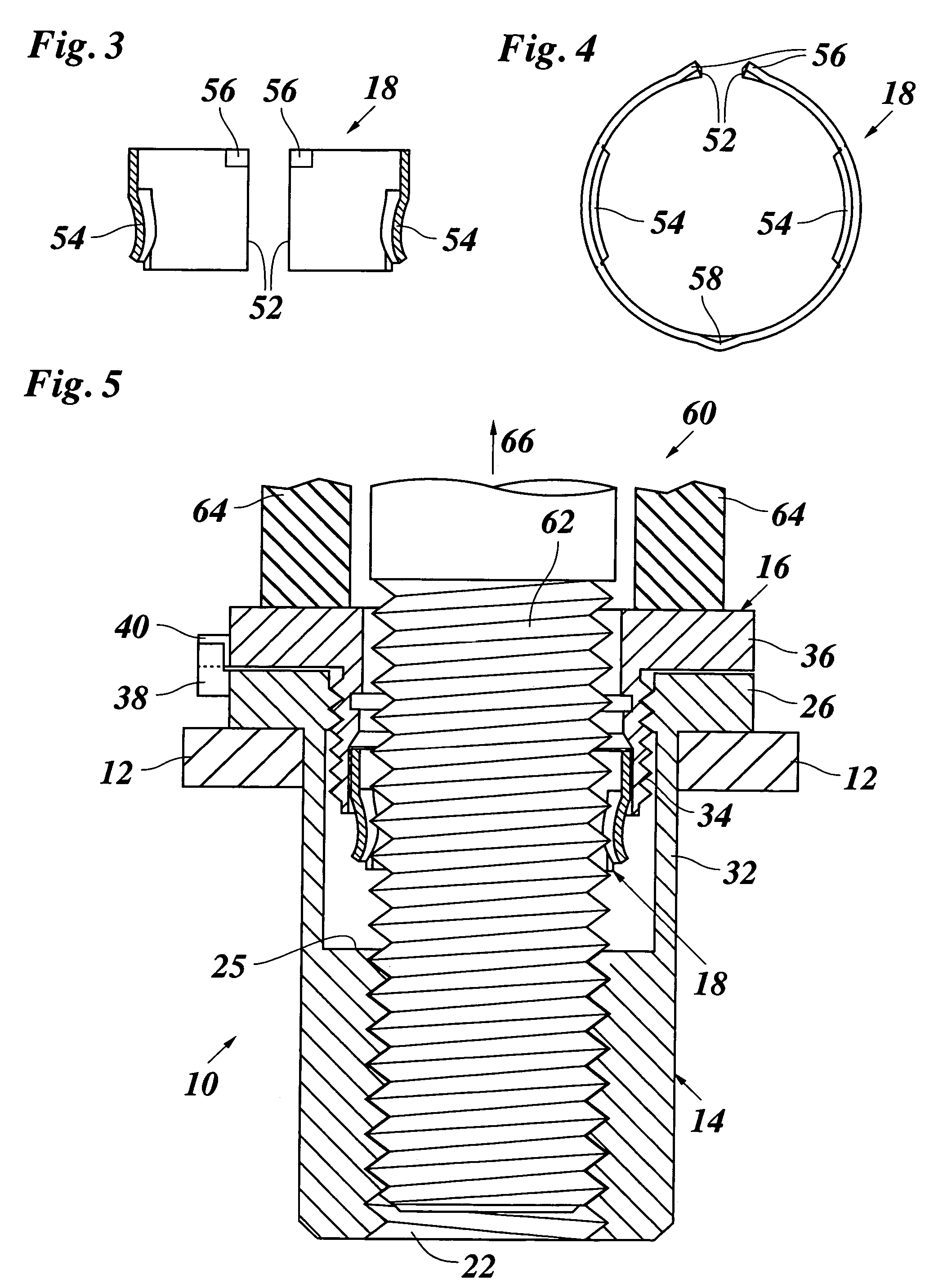Device for connecting component parts, comprising a blind rivet fastener
- Summary
- Abstract
- Description
- Claims
- Application Information
AI Technical Summary
Benefits of technology
Problems solved by technology
Method used
Image
Examples
Embodiment Construction
[0032]FIG. 1 shows a connecting device 10 in a supply condition, inserted in a first component part 12. The connecting device 10 is formed by a blind rivet nut 14 held at the component part 12, a spacer 16 screwed into the blind rivet nut 14, and an intermediate member in the form of an elastic ring 18 that has been inserted in a receptacle 20 on the bottom side of the spacer 16.
[0033]The blind rivet nut 14 has in its lower part a right-handed thread 22 for a connecting screw 24 (FIG. 8) the thread being surrounded at its top end by an annular support surface 25 for the elastic ring 18. At the top end, the blind rivet nut 14 engages an outer surface of the component part 12 with a flange 26. A left-handed thread 30 is formed in the top part of the blind rivet nut 14. Below the left-handed thread 30 and the flange 26, a thinner wall 32 forms a deformation portion the function of which will be explained below in conjunction with FIG. 6.
[0034]The spacer 16, which has been shown more cl...
PUM
 Login to View More
Login to View More Abstract
Description
Claims
Application Information
 Login to View More
Login to View More - R&D
- Intellectual Property
- Life Sciences
- Materials
- Tech Scout
- Unparalleled Data Quality
- Higher Quality Content
- 60% Fewer Hallucinations
Browse by: Latest US Patents, China's latest patents, Technical Efficacy Thesaurus, Application Domain, Technology Topic, Popular Technical Reports.
© 2025 PatSnap. All rights reserved.Legal|Privacy policy|Modern Slavery Act Transparency Statement|Sitemap|About US| Contact US: help@patsnap.com



